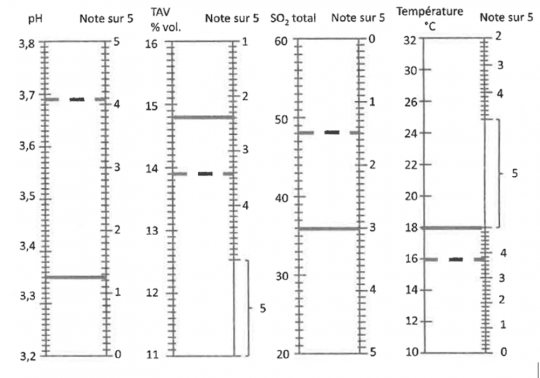What factors hinder malolactic fermentation?
Generally speaking, environmental toxicity will affect malolactic fermentation mainly by influencing the bacteria's membrane fluidity. At this stage, various interdependent criteria are present that can impede fermentation:
-
The ethanol content of the environment is a parameter that impacts cell viability. The greater the alcohol content, the more difficult fermentation becomes. This is obviously not specific to lactic acid bacteria but values above 14% by volume make it more difficult to initiate fermentation.
-
pH is also an obstacle if it is too low. Below pH 3.2, MLF is more difficult. One solution to this problem is to slightly deacidify a portion of the batch to initiate the MLF and then reincorporate it into the rest of the batch once MLF is underway. Given the current pH of wines, this practice is no longer really relevant.
-
Temperature is a key parameter as it is easily controlled. An ideal fermentation temperature is usually between 18 and 25°C. Below 16°C, MLF becomes more difficult. Above 25°C, ethanol toxicity has a major impact. However, the ideal MLF temperature is strongly dependent on alcohol content and pH.
-
Polyphenols: these can have a bacteriostatic effect in certain cases. This is highly dependent on the type of tannins encountered (condensed, polymerized, etc.) and therefore on the grape variety. In Bordeaux for example, Merlot is known to be more difficult to ferment than Cabernet Sauvignon.
-
Short and medium chain fatty acids that are produced by yeast during alcoholic fermentation. Octanoic and decanoic acids are the most inhibiting acids. It is considered that above 25 mg/L of octanoic acid and 5 mg/L of decanoic acid, MLF becomes difficult. One way to eliminate these inhibitors is by stirring the lees, to help adsorb these compounds, or by adding yeast hulls.
-
The initial malic acid concentration. A value that is too high or too low will make it more difficult to start MLF. The ideal value is between 2 and 3 g/L. It is generally accepted that MLF is facilitated between 1.5 and 4 g/L.
Here are some examples of temperature/ethanol/pH interactions:
If the alcohol level is above 14%, the ideal temperature is between 20 and 22°C.
For a wine with a low pH, it is better to use higher temperatures, whereas for a pH over 3.6, a temperature of 18°C is largely sufficient.
The level of total SO2 is also a factor influencing the lactic acid bacteria. If the total SO2 content is high, MLF is more difficult. Particular attention should be paid to sulphiting too early and too intensely.
A very easy-to-use scale enables a rapid evaluation of the medium's fermentability. It is based on four criteria:

